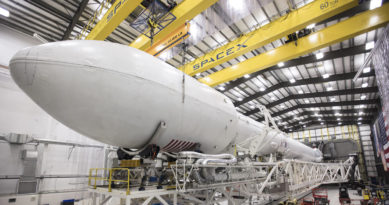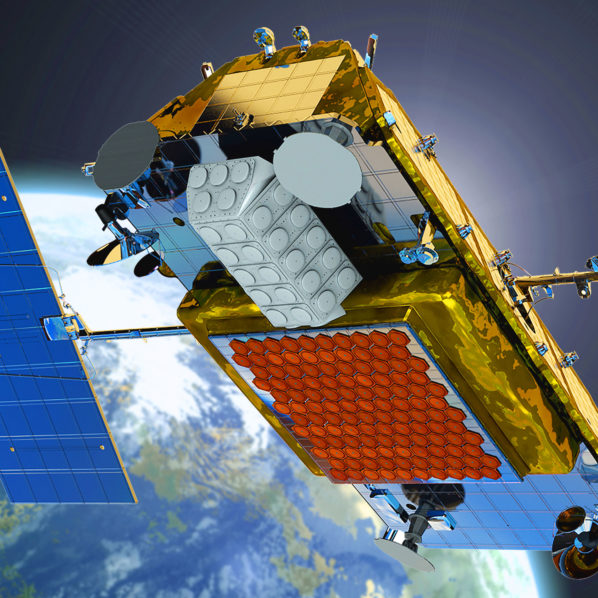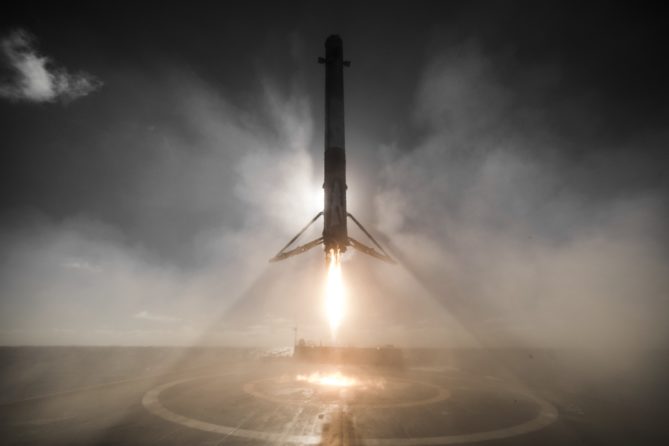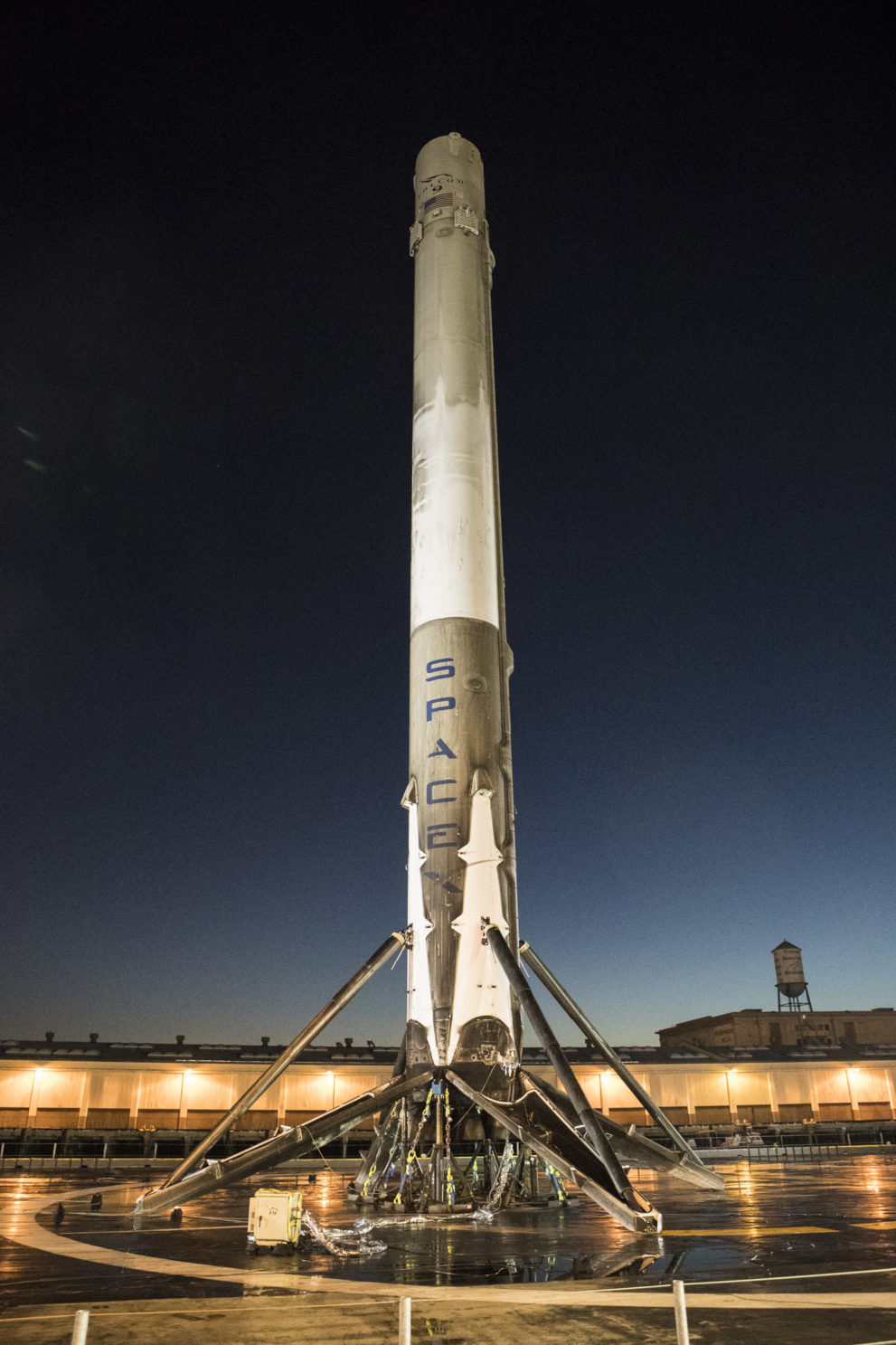
SpaceX has completed a Falcon 9 static fire test ahead of the company’s first launch of 2019, kicking off what is looking to be a truly jam-packed year for Falcon 9 and BFR. Most important, of course, is SpaceX’s primary business and main sources of revenue – safely and reliably launching customer satellites, payloads, and – soon – astronauts into orbit.
Previously tasked with launching heavy communications satellite Telstar 18V in September 2018, Falcon 9 B1049 is now set to launch an arguably historic mission for both SpaceX and customer Iridium, the eighth and final contracted launch of the upgraded Iridium NEXT satellite communications constellation.
Static fire test of Falcon 9 complete. Working with customer to determine best launch opportunity to complete the Iridium NEXT constellation; will announce targeted launch date once confirmed.
— SpaceX (@SpaceX) January 6, 2019
Struck all the way back in June 2010, Iridium’s decision to award the full NEXT constellation launch contract to SpaceX less than two weeks after Falcon 9’s first and only launch may well be the greatest calculated leap of faith in the history of commercial spaceflight. SpaceX did admittedly offer an unbeatable price ($492M for eight launches, $61.5M per launch) that may have allowed Iridium to afford a new constellation in the first place, but the risk Iridium took was truly immense at the time.
Originally launched between 1997 and 1998, the first Iridium constellation became and still remains the only satellite communications constellation in history to offer global and persistent coverage anywhere on Earth, allowing those with Iridium devices to guarantee connectivity no matter where they are. To some extent, the original constellation has become a subtle but omnipresent backbone of a huge variety of ventures, companies, and services, ranging from marine vessel tracking and emergency response to the go-to solution for those heading far off the beaten path. As just one small example, SpaceX’s large fleet of sea-going vessels and its cross-country transport infrastructure both rely on Iridium for streamlined company-wide movement tracking, making life considerably easier for logistics and planning teams.
@SpaceX #falcon9 vertical at SLC-4. Iridium NEXT-8 slated for 01/08 from #VandenbergAFB. #spacex #iridium pic.twitter.com/uJBIgG5Lrp
— Brian Sandoval (@brianksphotos) January 6, 2019
Iridium’s decision to use SpaceX for its NEXT constellation likely also gave SpaceX a massive stature boost, taking it from the company with just a handful of commercial contracts that had failed three of its last five launches to the company that secured what was at the time the largest single commercial launch contract in history. Alongside NASA’s Commercial Orbital Transport Services (COTS) and Resupply Services (CRS) commitments (~14 launches as of 2010), Iridium NEXT raised SpaceX’s commercial manifest from perhaps 2 missions to ~10 while also taking the value of those contracts from an almost negligible sum to well over half a billion dollars.
Although SpaceX and Iridium originally planned for launches to take place over a roughly 24-month period stretch from 2015 to 2017, unplanned technical delays and a duo of catastrophic Falcon 9 failures (CRS-7 and Amos-6) in 2015 and 2016 ultimately pushed Iridium NEXT’s launch debut back several years. Despite those immense hurdles and a range of smaller issues, SpaceX and Iridium were finally able to begin launching satellites in January 2017 and have continued to consistently do so every 3-4 months since then. Aside from one partial NASA rideshare mission that featured five NEXT satellites in May 2018, all seven launches have placed ten NEXT satellites (weighing approx. 10,000 kg or 22,000 lb total) in a variety of low polar orbits without a single known hitch.
Falcon 9 enters the era of reusability
Closely following SES, NASA, and SSL (BulgariaSat), Iridium also became the fourth commercial entity to launch on a flight-proven Falcon 9 rocket for the launch vehicle’s fourth flight-proven mission ever. Iridium-8 will become the fourth constellation launch to fly aboard a sooty Falcon 9 rocket, meaning that a full 50% of the next-gen satellites will have launched on reused rockets, easily one of the coolest bragging rights ever. Currently standing at 65 NEXT satellites in orbit and rapidly nearing operational status, Falcon 9 B1049 and a fresh upper stage will (fingers crossed) place the last ten satellites in orbit to complete the constellation’s last plane and seal the last gap in its perfect global coverage.
Although NEXT would have been valuable for the sole reason that its predecessor satellites are now 5-10 years past their designed lifespans, NEXT will also serve to dramatically increase Iridium’s overall bandwidth, slash concurrent user bottlenecks, and provide a platform for new services like Aireon, which hopes to become the first operator of a truly commercial aircraft tracking service with global satellite-based coverage.
All things considered, it will be hugely bittersweet to watch Iridium and SpaceX’s direct relationship come to a close with the launch of Iridium-8. Aside from nine additional on-orbit spares once all 75 are launched, Iridium will also have a complement of six more spares that will be kept in storage on the ground until they are required in orbit. If or when those times come, SpaceX will be able to compete with other launch providers for the opportunity to carry maybe one or two Iridium satellites – likely as rideshare payloads – into orbit sometime in the future.
Iridium open to rideshares for spare satellite launches https://t.co/ino39oWCHw pic.twitter.com/56PTcaEMW3
— SpaceNews (@SpaceNews_Inc) January 4, 2019
In the meantime, stay tuned for Iridium-8’s official launch time and date, likely to be announced by SpaceX sometime within the next 24-48 hours.
For prompt updates, on-the-ground perspectives, and unique glimpses of SpaceX’s rocket recovery fleet check out our brand new LaunchPad and LandingZone newsletters!







